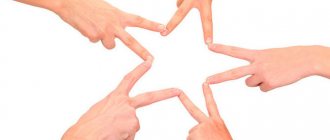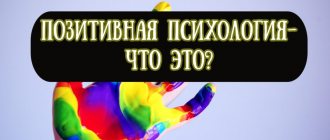About the method
Suggestio translated means “suggestion”. The first attempts at treatment in this way appeared at the beginning of the last century in Europe. The essence of suggestive therapy is that the doctor, using certain manipulations and techniques, “puts” certain information into the patient’s consciousness. And all this is aimed at healing, that is, getting rid of certain psychological blocks and addictions that can affect human physiology.
Applications and Features
Hypnosis and suggestion have a good effect in the treatment of many disorders, disorders and perversions. The technique brings good results when working with psychosomatic diseases, mixed disorders, depression and panic attacks. It would be extremely difficult to list everything. However, in many cases, patients themselves become the main obstacle to recovery. They show distrust and strive to control everything that happens.
Practice shows that the technique is good when the person himself gives up and capitulates. He can’t do anything and says, “I don’t care anymore, even if you cut off my head, if only it would stop!” Usually such defeatist sentiments are not welcome, but in psychiatry much, by definition, is turned upside down. If the person himself is so tired of his fears and obsessions that he is ready to “give up,” then there is a very high probability that he will at least allow himself to be put into a hypnotic sleep and will not resist it.
Modified consciousness is not a panacea, but an opportunity to correct something
As mentioned above, sleep or an altered state of consciousness in itself is not a panacea . Moreover, suggestion itself may differ only slightly from persuasion. The important thing is that sometimes it is useless to convince in the ordinary state of consciousness.
Worth seeing: Addiction psychotherapist: understanding addiction psychotherapy and rehabilitation
Imagine an 11-year-old boy who suffers from enuresis. No one forbids convincing him that he should wake up when he has the urge to urinate. But he can’t do it. Impact on the deep layers of the psyche can “invest” a new mechanism, and this is easier to do in a state of trance.
Peculiarities
The suggestive method is individual. The doctor must find a special approach for each patient in order for the treatment to be effective. These can be persuasive expressions that target a specific personality type. The content of these beliefs reflects the treatment measures that the therapist should use.
He pronounces the correct phrase clearly and distinctly, while maintaining a quiet, firm and calm tone. Each word carries a program, its meaning is deep and thought out in advance. Only in rare cases can a specialist change his tone and start making harsh statements. Again, it all depends on the individual case.
What happens during hypnotic suggestion?
The whole point is for the consciousness to work out exactly the same mechanisms that give rise to phobias, addictions, deviations, somatovegetative diseases, but with a different potential. The same power, but now it will work for healing. Currently, hypnosuggestive psychotherapy has an arsenal of 50-60 popular suggestion techniques. The most common are verbal. The presence of several main stages of suggestion is implied. For example, such...
Techniques for introducing hypnosis can be different
Introducing the patient into hypnotic sleep. For this, some monotonous sounds or measured movement of something can be used, which is offered to the patient for close observation. In words at this time, the psychotherapist describes the states that are associated with falling asleep:
- eyelids become heavy;
- breathing becomes measured;
- the heart beats evenly;
- the body relaxes.
Worth seeing: What is the difference between a psychiatrist and a psychotherapist?
Some also use sharp influence techniques. This may be an unexpected loud sound combined with the order “Sleep!” However, this does not work for all patients, and if people do not fall asleep after the order, they lose confidence in the specialist.
After the patient has fallen asleep, the “broadcast” of therapeutic formulations into his consciousness begins. In this case, the depth of sleep does not play a key role. The formulations are irrational and initially imply that the patient will not be skeptical or critical of them. The appeal is made not to the logical apparatus, but to the emotional-volitional one.
The patient is then brought out of the hypnotic sleep state. This is done with exactly the same orders. Sometimes the countdown method is used, when the patient wakes up fresh and alert when he hears a certain number. At the same moment, already in a state of wakefulness, the final suggestion is carried out, which is focused on everyday consciousness.
Hypnosis helps the therapist instill certain attitudes in the patient
It is characteristic that sleep is not mandatory in all cases. Other methods of suggestion are also known. The main task is to “bypass” the critical assessment of consciousness. This can be achieved by changing the timbre of the voice, entering a single emotional state with the patient and performing various techniques with him, for example, visualizations. Only the psychotherapist in this case becomes a “guide” for the patient, and he himself meditates and visualizes to the extent that this does not interfere with his role as an instructor and advisor.
Hypnosis
This type is also called the "partial" sleep state. The patient enters a trance with the help of a psychotherapist. This process allows not only to make a suggestion, but also to identify the true causes of certain mental disorders of the patient. This technique allows you to penetrate into the unconscious person and put an important message into it with the goal of getting rid of addiction or illness. This is perhaps the most effective method of suggestive psychology.
Hypnosis has been known for more than three thousand years. It was also used by the priests of Ancient Egypt and the healers of the East, calling it “animal magnetism.” Over the centuries, it has undergone many changes in public understanding and perception. In Russia, scientists Vladimir Bekhterev and Konstantin Platonov made a great contribution to the development of hypnosis at the beginning of the 20th century. Among European scientists, the works and experiments of Sigmund Freud, Milton Erickson, and Dave Elman are well known.
Contraindications to the hypnotic method are epilepsy, hysterical reactions in the form of uncontrollable laughter/crying, convulsive seizures. Psychotherapists also refrain from performing hypnosis if the patient has a delay in intellectual development, is taking psychotropic drugs, or is under the influence of drugs or alcohol. Pregnancy in women in the first three months and somatic diseases in the acute stage are also included in the list of contraindications for hypnosis.
Belief
This process is carried out while the patient is awake. This is probably why it is considered more complex in terms of influence. The specialist needs to find the right approach, “impulse points” and correctly influence a person’s emotions and consciousness, while bypassing the control of the mind.
There are open, camouflaged and rational beliefs. The first involves a direct message from the psychotherapist that he is influencing the patient and wants to make a certain substitution of concepts in his mind. Phrases here are usually constructed like this: “I will count to three and it will happen...”. However, human consciousness cannot always be caught on such hooks.
Rational beliefs include certain logical concepts and explanations that the specialist uses. The standard phrases here sound something like this: “You are forbidden (should not) do this because...”. This type of suggestion also does not work with all patients.
Suggestive psychotherapy most often uses hidden beliefs. They include three techniques: sequence of phrases until agreement, surprise and creative moments, and banality.
The first technique involves a set of phrases that are pronounced by the psychotherapist with an emphasis on the patient’s consent and its manifestation in the form of body responses (relaxation, restoration of even and calm breathing). For example: “You came to me... you are now sitting in a comfortable chair... you are relaxed... you have a problem... but after our session you will feel much better.” The first part of a series of phrases is aimed at the patient's consent, and the words “you will feel better” are persuasion.
Surprise and creative moments are pure improvisation of a psychotherapist who sees a patient in front of him who requires a special approach.
A banality is a set of phrases that the patient cannot refute. After the next confirmation of the “banal message,” the patient’s consciousness automatically greets the conviction positively. For example: “When a person is comfortable, he is relaxed. Each person solves problems in their own way. Your symptom will disappear once your unconscious mind understands that you are capable of solving problems constructively.” This may also include proverbs and sayings that are related to the topic of the session.
Thus, in a number of seemingly ordinary phrases with a confirmation vector, the specialist uses the hook of suggestive influence - persuasion. Contraindications here are taking psychotropic medications and emotional agitation.
Hypnosuggestive therapy
10) Hypnosuggestive therapy (Greek hypnos - dream; suggestio - hint, suggestion). Hypnosis or hypnotic trance (Latin trans - through, through) is, presumably, a state of maximum concentration of attention on one thing to the detriment of other stimuli that are not noticed; for the individual they do not seem to exist at all. The hypothesis that hypnosis is a state of partial sleep has not been confirmed. Currently, hypnotic trance is qualified as a state of altered consciousness. In a hypnotic state, suggestibility and self-hypnosis increase significantly, and the patient becomes more able to accept verbal therapeutic recommendations.
In addition, in a hypnotic trance there is a blockade of external expression of feelings. This makes it possible to reduce the influence of self-censorship on the mental processes of symbolization of affectively charged traumatic material and thereby understand it, “get closer” to it. In an altered state of consciousness, the patient can explore and work through emerging images and symbols, based, for example, on the pictures of a cave, meadow and stream offered to him (Leuner, 1969).
A similar method of work is used in the treatment method of guided fantasy and music (UFM). In a state of altered consciousness, an “inner journey” is performed to the accompaniment of special classical music. As the music plays, the patient talks about what he sees, feels and does internally. The therapist’s task in this case is to help him open up during the “journey” and then comprehend what he “saw.”
A frequently used version of hypnotherapy is the method of self-hypnosis followed by therapeutic self-hypnosis.
Hypnotherapy has been widely used and welcomed at times, popularized, and then disillusioned and discredited, and this has been the case for the last 150 years. It is used constantly by professional psychiatrists, mainly as a symptomatic treatment, since it is most often unable to eliminate the main causes of psychiatric disorders. Hypnotherapy is contraindicated for psychotic disorders, as it can cause an exacerbation of mental disorder. In addition, the very process of immersion in a hypnotic trance and staying in it can undermine the already unstable psychological balance of an individual.
Such an ambiguous attitude towards hypnosis is one of the reasons why hypnotherapy is used with caution in the treatment of children and adolescents. It is noted that children rarely achieve a deep degree of hypnotic immersion, and they also tend to easily lose rapport (the connection between the patient and the therapist). In addition, children are more likely than adults to move from hypnotic sleep to a state of physiological sleep. A common side effect of hypnosuggestion in children and adolescents is that some of them (especially girls) easily get used to such attention to themselves and begin to strive to be “treated with hypnosis.”
Therefore, psychotherapeutic suggestion in a waking state is more preferable in children (Platonov K.I., 1957), as well as the use of indirect (“trans-objective” suggestion, according to V.M. Bekhterev) suggestion through other persons. Therapeutic suggestion is also practiced in a pre-sleep state - this can be done by the parents themselves according to the instructions of the psychotherapist.
Illustration of suggestive psychotherapy in the waking state of a child (Kovalev V.V., 1979): five-year-old S. witnessed a car accident, after which he developed a fear of cars, he was afraid to play in his yard, past which cars periodically passed. The boy's parents turned to a psychotherapist; it was decided to conduct 3–4 sessions of therapeutic suggestion while awake. The intervals between sessions were 3 days, the duration of each session was 10–12 minutes. The content of the suggestion was approximately as follows.
“Take a comfortable position, don’t think about anything, don’t close your eyes, breathe slowly and deeply, listen to every word the doctor says. You feel calm, nothing bothers you or disturbs you. You want to play with the guys in the yard, but fear prevents you from doing so. Imagine that you are in your yard, that you are playing with the guys. You are still a little afraid that a car will suddenly pass in the yard, but this rarely happens. You always imagine yourself playing in the yard, you are no longer afraid of anything, you have overcome your fear, you are strong, brave and fearless, like an astronaut, like a real man.”
After the third session of suggestion, the boy’s condition clearly improved; he was already playing in the yard without any fear. The fourth session consolidated the results of the psychotherapy. The formula of suggestion was the same, but with the addition of phrases pronounced in the future tense: “You will always be strong, brave, you will never be afraid of cars, you will teach others how to be brave. And if you ever have a little fear, you will remember everything that was taught to you during therapeutic suggestion, and you will be able to overcome your fear yourself.” Follow-up after 5 years showed the persistence of the resulting therapeutic effect.”
Return to Contents
Autotraining
This technique is also called self-hypnosis or self-hypnosis. Already from the definition it is clear that all work is carried out by the patient independently, but under the strict supervision of a specialist. In the process of auto-training, a self-healing mechanism is launched in the human body, getting rid of bad habits and the like. At the physiological level, there is an increase in the tone of the parasympathetic division of the autonomic nervous system, which helps neutralize stress reactions.
Autotraining was proposed as a therapeutic method back in the 30s of the last century by the German scientist Johann Schulz. In Russia, this method became widespread only 20 years later.
Autotraining is not just repeating the same key phrase. This is a whole series of exercises that are divided into two stages. The lowest includes auto-training training to restore smooth breathing, a calm heartbeat, dilation of blood vessels, and muscle relaxation. Exercises of the highest level consist of calling up mental images of a certain color, shape and size. Then follows the transfer of this object to a specific object of reality and the formation of abstract concepts (for example, happiness or joy) in the form of these images. In the process of such training, the patient experiences a state that Johann Schultz called “catharsis of hypnosis.”
Also, auto-training training for the purpose of influence includes five categories:
- neutralizing (forms in the patient indifference to irritating factors, for example: “pollen, I don’t care” - in case of allergies);
- reinforcing (activate hidden thought processes, for example: “I will wake up when I want to go to the toilet” - with enuresis);
- paradoxical (use the effects of “reverse action” of formula phrases with a suggestive function);
- abstinence-oriented (get rid of bad habits and addictions, for example: smoking, alcoholism);
- supportive (considered the gentlest, stimulating the development of positive personality traits).
Contraindications for auto-training include confusion, delirium, acute somatic attacks, and vegetative crises.
Euthanasia of the patient
This stage is basic and helps to relax and prepare the patient for the upcoming treatment session. There are several suggestive techniques for introducing a person into the desired state of rest or “partial” sleep. Most often it is just monotonous speech with certain hook words. However, the sound of the sea surf, metronomic tapping, buzzing of a buzzer, fixation of the patient’s gaze on one shiny object, etc. also have a “sleeping” effect.
In the case of ordinary persuasion or auto-training, euthanasia is not required. As a preparatory part, the therapist simply uses techniques to relax the patient as much as possible. This is necessary so that the body is open to accepting suggestions from the doctor and stopping certain mental and physiological abnormalities.
As for hypnosis, there are three degrees of sleep: somnolence (superficial muscle relaxation), hypotaxia (complete muscle relaxation) and somnambulism (deep sleep). During this type of suggestion, the patient hears the therapist's voice and responds to his instructions.
Suggestive psychotherapy (lecture)
Topic: Suggestive psychotherapy
Plan
- The use of suggestion in psychotherapy.
- Hypnosuggestive psychotherapy.
- Indications and contraindications for the use of hypnosuggestive therapy.
- Self-hypnosis.
Literature
Kondrashenko V.T. and others. General psychotherapy. – Mn., 2003. – 464 p.
Demyanov Yu.G. Fundamentals of psychoprophylaxis and psychotherapy: a short course. – M., 2004. – 128 p.
1. In suggestive psychotherapy, the following concepts are distinguished: suggestion, suggestibility and hypnosis. Accordingly, they are conventionally divided into: suggestion therapy, therapy through hypnosis (hypnotherapy) and suggestion therapy in a state of hypnosis (hypnosuggestion) - the latter method is the most common.
Suggestion (suggestion) is various methods of verbal and non-verbal emotionally charged influence on a person in order to create a certain state in him or encourage him to take certain actions.
Through suggestion, various sensations, ideas, emotional states, volitional impulses, changes in body functions (somato-vegetative) can be caused.
Suggestion differs from persuasion in that information is perceived without critical processing. Bekhterev wrote that suggestion, unlike persuasion, enters a person’s consciousness not from “the front door, but, as it were, from the back porch, bypassing the watchman - criticism.”
Suggestion is a purposeful, unreasoned influence of one person on another or a group. With suggestion, the process of transmitting information is carried out based on its uncritical perception. The process of suggestion is one-sided; it is a personalized, active influence on another. With suggestion, it is not agreement that is achieved, but simply acceptance of information based on a ready-made conclusion. During suggestion, there is mainly an emotional-volitional influence. The effectiveness of suggestion is determined by the following factors:
- age (children are more suggestible);
- well-being, condition - tired, weakened people are more suggestible;
- the authority of the suggestor - trust in the source of information;
- the personality of the suggender - his individual properties, the degree of resistance to suggestion;
- existing social attitudes.
Increased suggestibility - in a certain state of consciousness (falling asleep, waking up, dozing, hypnotic sleep), in hysterical psychopaths, alcoholics, drug addicts, military personnel and athletes (habit of obedience), in conditions of uncertainty, extreme conditions (danger), in a crowd.
Suggestion plays an important role in the life of society - in upbringing and education, psychological practice, propaganda, management, trade, advertising, medicine, etc. Suggestion is used to varying degrees in various psychotherapeutic areas and methods. It is also one of the independent methods of psychotherapeutic treatment. The authority of the doctor, the environment and the treatment process have a suggestive effect on the patient. There are:
- heterosuggestion - suggestion from another person;
- autosuggestion - self-hypnosis;
- real suggestion - caused by an action, process;
- verbal - using words,
- direct suggestion - immediate (the source of information is realized);
- indirect suggestion - an intermediate link (stimulus) is used - placebo effect. The patient’s consciousness resists less, therefore it is more effective than direct.
Suggestion for therapeutic purposes can be carried out while awake, in a state of hypnosis, as well as in shallow natural and narcotic sleep. Suggestion in the waking state is indicated for all forms of neuroses (especially hysterical), alcoholism, smoking, for the purpose of correcting deviant behavior. This method is especially effective in treating children and people with increased suggestibility (suggestion techniques - pp. 40-42, Kondrashenko).
Suggestion in a state of natural sleep. The brain has systems involved in organizing sleep (somnogenic centers). They are active during sleep. There are several stages of sleep: transition from relaxation to drowsiness, drowsiness, light sleep, moderate sleep and deep sleep. Accordingly, sleep phases are distinguished. Phase states determine selective sensitivity to certain stimuli, with the help of which it is possible to maintain contact with the outside world - these are “guard points”. Through these centers, in certain phases, you can establish rapport with a sleeping person using speech (establish and maintain contact). The effect of suggestion is high. It is used in the treatment of phobias, hysteria, nocturnal enuresis, neuroses, and alcoholism.
2. Hypnosuggestive therapy (hypnosuggestion) is a method of suggestion in hypnosis.
(The doctrine of hypnosis is associated with the name of the Viennese physician Franz Mesmer, 18th century.).
This is a method of psychotherapy aimed at emotional, volitional, and deep personal components. This is the use of hypnotic sleep for therapeutic purposes, against the background of which the psychotherapist makes therapeutic suggestions. They can be aimed at relieving a painful condition, instilling good health, and eliminating signs of the disease. In a state of hypnotic sleep, the patient has no criticism, therefore therapeutic formulations given in an imperative style in short phrases are effective in eliminating fears, gaining confidence, the ability to solve problems and changing the functioning of internal organs (Rozhnov, Boul, Platonov, etc.). In our country, this area of psychotherapy has been widely developed. The most common technique is to verbally immerse the patient in a state of hypnotic sleep. The doctor describes to the patient the sensations usually experienced when falling asleep. Descriptions are given figuratively, in short phrases, calmly and measuredly, with repetitions, mainly in an affirmative and imperative form. Immersion in a hypnotic state is facilitated by fatigue from monotonous stimulation of the visual, auditory or tactile analyzer. The depth of hypnotic sleep can be different: - somnolent stage (in the form of drowsiness); - cataleptic; - somnambulistic. For therapeutic suggestion, the depth of sleep does not play a significant role. Suggestion is carried out in clear, short phrases, affirmative or imperative. The patient is brought out of hypnotic sleep slowly and smoothly, while at the same time instilling good health after the session.
The technique of immersion in hypnosis can be different, but the main thing in hypnosuggestion is the content of the therapeutic suggestion. It is irrational in nature, addressed not to logic, but to the emotional and volitional characteristics of the patient.
E. Erikson suggests using the patient’s leading perceptive system (representative modality) to enter information.
The entire treatment process is conventionally divided into several periods (stages): preparatory (there may be tests for suggestion), hypnotization, therapeutic suggestion, dehypnotization with post-hypnotic suggestion. Currently, there are more than 100 methods of hypnosis (methods and techniques of hypnotization - pp. 50-63). Most often, this is the effect of repeated monotonous stimuli (the sound of a metronome, the ticking of a clock, the movement of a pendulum, touches, hand passes, words) on various analyzers. Or these are shock methods - the action of a strong sudden stimulus (loud sound, flash of light, electric shock) combined with the order “Sleep!” Based on these 2 methods, many variants of hypnotization techniques have been developed.
3. Direct indications for the use of hypnosuggestion:
- hysterical disorders. Especially with hysterical monosymptoms: paralysis, speech disorders, hearing disorders, psychogenic amnesia, etc.;
- in children (Zakharov): psychogenic mutism, neurotic stuttering, respiratory tics, hysterical paresis, paralysis; allergies, nocturnal enuresis (and in adolescents).
Hypnosuggestion is indicated: for sleep disorders, neurasthenia, phobias, obsessive-compulsive neuroses; in children - for fears, to combat bad habits (nail biting, masturbation, grimacing); in adolescents - when correcting deviant behavior (suicides, sexual deviations, delinquency).
It is advisable to use it for psychogenic depression and the treatment of sexual disorders.
Used: - for somatic diseases (hypertension, asthma, peptic ulcer, allergies, heart rhythm disturbances, anxiety and depression during a heart attack);
- for drug addiction, alcoholism, smoking;
— in obstetrics and gynecology (labor pain relief, etc.);
— for skin diseases (eczema, psoriasis, lichen, itchy skin, etc.);
— in surgery, anesthesiology, dentistry; treatment of extensive burns.
Contraindications: - psychoses (schizophrenia, etc.);
- severe mental retardation;
- epilepsy;
- painful conditions with severe intoxication, fever, impaired consciousness (coma);
- acute heart attack;
- acute cerebrovascular accident;
- hysteria with hypnomaniac attitudes (thirst for hypnosis);
- when excessive attachment to the doctor occurs, therefore hypnosis is recommended to be carried out in medical institutions or in the presence of a third party.
The question often arises, “Is it possible to suggest a criminal or immoral action in hypnosis?” Most scientists think not. If a person has deep ethical principles, then he cannot be taught something that contradicts them. If a person has antisocial attitudes, then criminal impulses can be instilled both in a hypnotic sleep and in a waking state. In our country, the use of hypnosis is regulated by certain legal standards. It is prohibited to use hypnosis on stage. Hypnosis sessions are allowed to be carried out in a medical institution, preferably in the presence of a third person. Data about the session are entered into special documentation (medical history, medical journal).
The possibility of using communication and mass media in hypnotherapy is widely discussed. Hypnotization can be carried out by telephone, radio, television, video and tape recordings. More often, sessions are conducted using tape recordings, but the first 2-3 sessions are conducted by a doctor, then his voice is recorded. Video recordings and television can be used after a thorough diagnostic examination and selection of patients, there should be feedback from patients and long-term treatment results should be studied, since there may be complications when using hypnosis.
4. Self-hypnosis is a complex volitional process that ensures the targeted formation of readiness for a certain action or state.
Self-hypnosis can be involuntary and voluntary. Involuntary self-hypnosis is mediated by additional factors and carries a powerful emotional charge. Voluntary self-hypnosis involves focusing thought and attention on the 1st idea. Through self-suggestion you can influence mental and vegetative processes. Self-hypnosis is possible in a waking state - the Coue method, and in a state of autohypnotic trance - the Schulz method.
Coue's method. A self-hypnosis formula is drawn up - “I am healthy” instead of “I am not sick”, etc. It can be short or extended. During the session, the patient takes a comfortable position, sitting or lying down, closes his eyes, relaxes and in a whisper, without tension, pronounces the same self-hypnosis formula 20 times. You need to pronounce it monotonously, quietly; to count, he sorts through the tied knots. Session 3-4 minutes, 2-3 times a day, for 6-8 weeks. It is better to do it in the morning when waking up and in the evening when falling asleep. Don’t fixate your consciousness on the content, speak naturally.
The yoga system is based on self-hypnosis.
The Jacobson method is progressive muscle relaxation. Learn to tense and relax different muscle groups.
Autogenic training - the Schultz method. A person’s emotional reactions are accompanied by tension in certain muscles, increased heart rate, etc. Schultz proposed treating people experiencing fear, anxiety, and depression using muscle relaxation using self-hypnosis, which will lead to mental relaxation and recovery. There are 2 stages of autogenic training. Most often the 1st (lowest) stage is worked out. The patient learns to master muscle relaxation with the help of special exercises, inducing a localized feeling of warmth, heaviness, and a calm rhythm of the heartbeat and breathing. The patient is in one of 3 poses – “coachman’s pose”, reclining or lying down and learns to perform 6 exercises in sequence, mentally repeating the proposed formulations after the therapist. At the beginning and end of each exercise, the phrase is said: “I am completely calm.” Each formulation is repeated by the patient 6 times, mentally. Each exercise is mastered over the course of 2 weeks, adding to the previous exercises. Exercises:
- causing a feeling of heaviness in the arms and legs with muscle relaxation;
- causing a feeling of warmth in the hands and feet;
- regulation of heart rate;
- regulation of breathing rhythm;
- causing a feeling of warmth in the solar plexus area;
- causing a feeling of coolness in the forehead area.
Sessions are conducted once a week with a therapist, and at home he repeats the exercises on his own 2-3 times a day. Session duration is 15-20 minutes. It takes 3 months to master all the exercises. The patient is now able to achieve a state of autogenic immersion. In this condition, it is possible to use medicinal formulations - their content depends on the symptoms. But you can completely neutralize painful experiences and get rid of them by mastering the 2nd (highest) stage of autotraining - this is autogenic meditation. To do this you need to master the following exercises:
- retention in the imagination of any color that arises involuntarily;
- active evocation and retention of the representation of an object;
- detailed and long-term retention in the presentation of the subject;
- evoking any visual images in response to the presentation of abstract concepts (good, evil, justice, etc.);
- presentation of emotionally significant situations with “vision” of oneself at the center of events;
- conjuring up stable images of “positive”, “neutral”, and “negative” people for oneself;
- evoking a stream of visual images and questions “Who am I?”, “What do I want?”, “What is my problem?” - in response to the idea of a disturbing situation.
Exercises of plot imagination or self-affirmation are also used (imagine a situation in which a desired emotional state arises. “Look” at it clearly and in detail in order to experience the desired sensations and immerse yourself in a given mood. Or imagine a disturbing situation, in detail and vividly, but with a plot, in which the person is the winner).
Autogenic training is effective in the treatment of neuroses and psychosomatic disorders.
What is being treated?
Suggestive therapy is very effective for the treatment of psychosomatic diseases that manifest themselves at the psychological and physiological levels. The method has been noted to have a positive effect in getting rid of headaches of various etiologies, asthma attacks, panic attacks, neuroses and even bronchial asthma. Also, the use of suggestion allows you to cope with allergic reactions and skin ailments.
This treatment method should not be forced. Many patients are skeptical about suggestive therapy. However, this only reduces the effectiveness of the method. Before starting sessions, it is very important for the psychotherapist to have a conversation with the patient and explain to him the essence and principles of suggestion. A person’s faith and voluntary desire are prerequisites for such therapy. However, when struggling with drug and alcohol addiction, patients often do not follow the instructions of the psychotherapist or are afraid/unwilling to undergo treatment. In this case, suggestion therapy will not have any effect.











